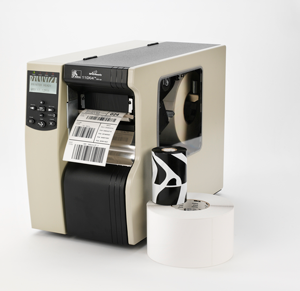Warehouse Automation – What’s the Hold Up?
Efficiency counts. That is the reason Metal Service Centers, Processors and Fabricators look to improve efficiency at every level of the organization. Increased productivity is one reason that companies look to improve. It means an increase in a competitive edge and a reduction in cost. Upgrading personnel, updating internal IT systems and scrutinizing management strategies are a part of every company’s ongoing assessment. However, when it comes to warehouse automation, where efficiency can be quantified and improvements are most evident, companies are reluctant to implement any process improvement.
There are a number of reasons why metal companies avoid warehouse automation. First, there is a financial concern. Many believe that implementing new strategies to automate the warehouse will cost more than the benefit derived from the proposed changes. There is an investment in new hardware and software that will be introduced by the way of barcode scanners, mobile computers, printers, labels/ribbons, additional network security, wireless set up, as well as, possible software development and ERP integration. What most fail to realize is that many of these costs are already covered under the current IT office configuration.
Many companies already have a wireless local area network (WLAN) established as part of the companies central IT configuration. Wireless data networks provide real-time access to your data transactions, making your operations in the warehouse (or the office) more efficient. With a wireless network in place, companies can get real-time information, as it is created and updated, not to mention that the data is then instantly available to other users and business systems.
Although there is an investment needed in the purchase of barcode scanners, mobile computers and barcode printers, as with all technology, these devices continue to improve and the cost continues to come down. A wide range of Barcode scanners are available for warehouse processing. Some provide industrial strength scanning for far distances, some are rugged to handle harsh or dirty operating conditions and all provide high-performance image scanning with fast and accurate data capture. Common brands include Symbol, Motorola, Datalogic, Honeywell and Intermec. Many of these companies offer refurbished equipment, which include a warranty and which perform just as well as the newer models.
Symbol has a number of options available for mobile computing, with some of the newest sturdiest mobile computers available. They have a wide range that are capable of running a Windows operating system with the latest in technology from Microsoft, Cisco and Intel, with a variety of barcode scanning options. They are specifically designed for harsh warehouse conditions, varying temperature environments and the outdoors. Vehicle mounted mobile computers can be attached to fork lift trucks or warehouse vehicles. These devices are very powerful and can run many of the same applications that are being run in the office on a desktop or a laptop computer. There are a number of options available, some include a keyboard on the device, some come with an attachable keyboard and some are available with a touch screen.
The cost benefit of using barcode scanners and readers in the warehouse come in a number of forms. First there is speed. In order to increase speed and efficiency, companies need a solution for increasing data input and decreasing human error. According to Barcoding, Inc., a bar code label of twelve characters can be wanded in approximately the time it takes a keyboard operator to make two (2) keystrokes. Second is reliability. Wrong information in your operation can create lost business, hold up order processing and ultimately delay your shipments – thus impacting your customer satisfaction. The typical error rate for human data entry is 1 error per 300 characters versus the error rate of a bar code reader that can be as good as 1 error in 36 trillion characters depending upon the type of bar code used1. Replacing the manual, time-consuming process of data entry with the streamlined accuracy and efficiency of reading a scanned bar code can save on numerous errors by a keyboard operator.
Barcodes come in a number of different formats. Metal service center and processing warehouses typically use a linear barcode. Labels can come from suppliers, created internally for tracking of inventory or created as part of the shipping process to identify customer material.
 Linear barcode used in industrial settings
Linear barcode used in industrial settings
The Matrix or 2D barcode is a new barcode that is used more in public settings for accessing additional information and mostly used with a mobile device such as an iPhone.
 Matrix (2D) barcode typically used in more popular culture
Matrix (2D) barcode typically used in more popular culture
Once companies understand the cost benefit associated with automating the warehouse, they are next concerned with employee training. Although education should be a priority for all companies, warehouse personnel are often left out of training programs. Barcode readers and scanners are not that sophisticated and are easy to learn. A user is typically trained on the use of the equipment within 15 minutes.
Once users are trained, productivity can be tracked and performance standards can be implemented. Companies are able to build in standards and procedures into the operation of the warehouse, which in effect, will increase employee productivity. Documentation can be automated to ensure education, application and the results stay in sync.
Barcode labels on material identify the item, supplier, lot number and more. Receiving can be more effective when personnel are able to scan a supplier’s bar code label. In many cases, this data will be present on the company’s ERP system as it was transmitted through Electronic Data Interchange (EDI). In this case, the warehouse has the information before the material arrives to the warehouse. The same can hold true for shipments to customers. Once in transit, barcode labels provide an effective means of tracking packages and collecting proof of delivery.
The bottom line is employees in a warehouse will use much more sophisticated equipment than what is required with the use of barcode readers, scanners and printers. Barcode scanning can even bridge language barriers for warehouses that employee non-English speaking workers.
The last barrier to implementing warehouse automation is Management Buy-in. In addition to employee training, many companies are concerned with empowering warehouse personnel in new decision making responsibilities. However, when warehouse automation is combined with a warehouse management or ERP system, such as Metalware, software tools can provide more visibility on what is happening in the warehouse; from receiving, to production to shipping. Management actually has more information from which to evaluate employee production and the need to improve processes. Employees can no longer hide time inefficiencies, as production start and stop times are recorded and costed directly to the all transactions.
In Metalware, the management team can compare estimated production run times with the actual time taken on the job. Analysis can be done with the job as a whole or as finite as each step in the production process. Set up, clean up, saw changes, picking and staging of material can all be collected and updated from the warehouse to the Metalware ERP system.
Companies can decide to automate a single operation or to introduce automation to the entire warehouse. A simple first step is to create barcode tags for the current inventory. Start by printing and identifying material, without using any scanning equipment. The cost to implement this change is minimal, as all that is needed is a barcode printer (and associated software). Then add the identification of shipping tags, barcoding material as it is delivered to the customer. After the warehouse is used to seeing barcode labels on all material, add in scanning equipment to perform simple tasks. Start the barcode reading process with scanning physical inventory counts and tracking material movement until you graduate to full fledge scanning throughout the warehouse.
It won’t be long before the value of barcodes and scanning offer a payback on the cost of the implementation. Companies quickly start to see the benefits with operational efficiency, increased customer satisfaction and best of all, the ability to see and analyze warehouse activity in real-time.
 Zebra 110 Xi4 Industrial Printer
Zebra 110 Xi4 Industrial Printer
Seton Blog, “Top Reasons Why A Barcode Scanner is Good for Business”.


